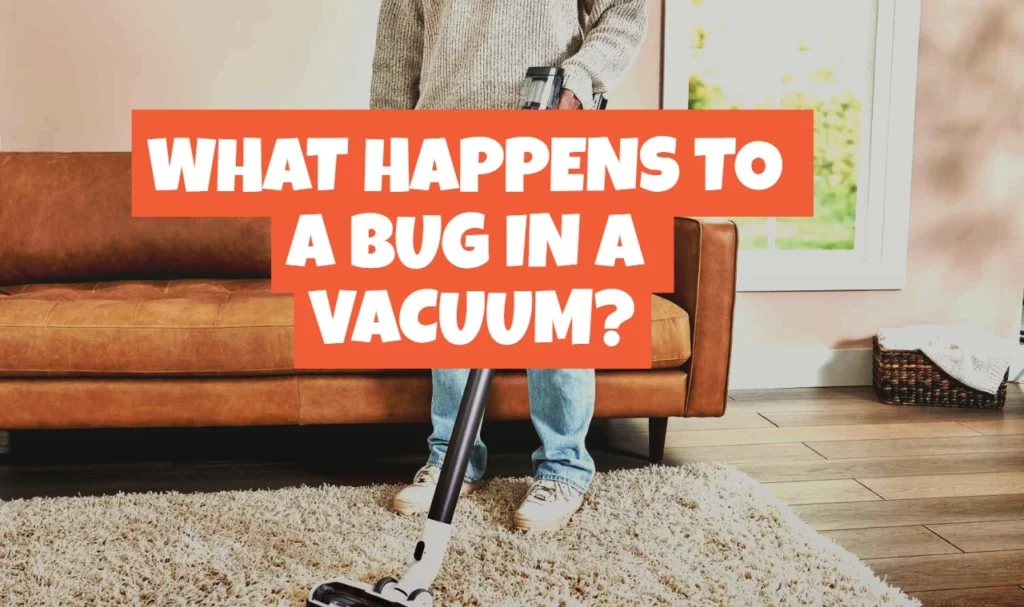Table of contents

The question of what happens to a bug in a vacuum is more complex than it first appears. When most people think of a ‘vacuum’, two main scenarios come to mind: a vacuum cleaner and a vacuum chamber, or outer space. While both conditions share some common characteristics, namely the removal or reduction of air and pressure, their impacts on a bug can vary dramatically. This article aims to explore both scenarios in detail, shedding light on the intriguing interplay of life and physics.
Bugs and Vacuum Cleaners
A vacuum cleaner works by creating a difference in air pressure. The electric motor drives a fan that pushes air out of the exhaust port, which lowers the air pressure inside the vacuum cleaner. The higher pressure outside forces air, along with dust and small debris, into the vacuum cleaner through the intake port. But what happens when this small debris is a living creature, like a bug?
So, what happens to a bug in vacuum? When an bug is sucked into a vacuum cleaner, its experience is highly influenced by the type and size of the vacuum, the nature of the debris present, and the bug’s physical attributes. Many believe that the bug would be killed instantly. However, this isn’t necessarily the case.
The journey into a vacuum cleaner can be harsh due to the strong suction and the potential for collision with other debris in the dust bag or canister. However, if the insect is robust and lucky enough to avoid violent collisions, it could potentially survive the initial trip. The lack of air flow inside the bag or canister might not pose an immediate threat either, as bugs consume oxygen at a much slower rate than larger animals due to their smaller size and slower metabolic rate.
The real threat to the bug’s life inside a vacuum cleaner comes from the lack of food, dehydration, and the inhospitable environment filled with dust and debris. Thus, if the bug doesn’t get crushed or injured during the suction process, it would eventually die from dehydration or starvation unless it’s removed promptly.
Respiration in Insects
Insects respire through their tracheal system, a network of tiny tubes that permeate their bodies, supplying oxygen directly to their cells. Unlike mammals, which rely on a circulatory system to transport oxygen, insects’ tracheal system allows for passive diffusion of gases, requiring no energy. In normal circumstances, this method is highly efficient.
However, in a vacuum cleaner, the dust and debris might clog the insects’ spiracles (the openings of the tracheal system) and impede this gas exchange. In a vacuum chamber or space, the lack of atmospheric pressure would disrupt this delicate system altogether, leading to rapid decompression and death.
Metabolic Rate and Starvation
Insects have a lower metabolic rate than larger animals, meaning they need less food and oxygen to survive. They can also enter a state of torpor, reducing their metabolic rate even further to survive periods of food scarcity or harsh environmental conditions. This ability might help them survive longer inside a vacuum cleaner, but it would not aid in a vacuum chamber or space, where the lack of pressure and oxygen is an immediate and insurmountable problem.
Bugs in a Vacuum Chamber or Outer Space
A vacuum chamber or outer space represents an extreme environment, with negligible air pressure and oxygen levels. The fate of a bug in these conditions would be drastically different than in a vacuum cleaner.
What happens to a bug in vacuum? The lack of air pressure means that the usual gas exchange system used by insects, the tracheal system, would fail. Unlike humans, bugs don’t have lungs. Instead, they breathe through a series of tubes (tracheae) and smaller branching tubules (tracheoles) that deliver oxygen directly to their body cells. In a near vacuum, the low pressure would cause gases in the tracheal system to rapidly expand and escape, leaving the insect without a means to get oxygen to its cells. This rapid decompression could cause physical trauma and is likely to be instantly lethal.
Furthermore, the extreme cold of outer space could potentially cause the water in the bug’s body to freeze, resulting in a process called lyophilization, or freeze-drying. In this state, the insect would be effectively dead, its body preserved by the freezing temperatures.
Water Retention and Regulation
Water regulation is another crucial aspect of an insect’s survival. Insects have a waxy layer on their exoskeletons that helps prevent water loss. However, in the extremely dry environment of a vacuum cleaner bag or a vacuum chamber, this might not be enough to prevent dehydration.
When it comes to the extreme cold of outer space, it’s worth noting that some insects on Earth can survive freezing temperatures by producing antifreeze proteins that lower the freezing point of their bodily fluids. However, these adaptations are geared toward survival in cold weather, not the absolute zero conditions of space.
Conclusion:
While the survival chances of a bug in a vacuum cleaner are slim due to the harsh physical conditions and eventual starvation or dehydration, it’s the near-instantaneous death sentence in the case of a vacuum chamber or outer space that truly showcases the fragility of life against extreme environments. Despite the resiliency of insects in various conditions, a vacuum represents a boundary that even these adaptable creatures cannot overcome. So next time you marvel at the cosmic void above or switch on your vacuum cleaner, spare a thought for the humble bug and the complex science that dictates its fate.
